Sinaing na Tulingan Recipe
Sinaing na Tulingan is a Filipino Fish Recipe that translates to braised fish. The recipe makes use of bullet tuna. It is a type of saltwater fish locally known in the Philippines as “tulingan”. This dish is famous in the coastal towns of Batangas. Tulingan, or bullet tuna, is all over the Philippines because our tropical…
This post may contain affiliate links. Please read our disclosure policy.
Sinaing na Tulingan is a Filipino Fish Recipe that translates to braised fish. The recipe makes use of bullet tuna. It is a type of saltwater fish locally known in the Philippines as “tulingan”. This dish is famous in the coastal towns of Batangas.
Tulingan, or bullet tuna, is all over the Philippines because our tropical Southeast Asian waters are just perfect for this fish. That’s why we have so many delicious tulingan dishes, like ginataang tulingan. If you’re ready to try something new instead of just frying your fish, you’re in the right place. Put on your aprons, and let’s cook up one of the most famous dishes from the coastal towns of Batangas, the sinaing na tulingan!
What is Sinaing na Tulingan?
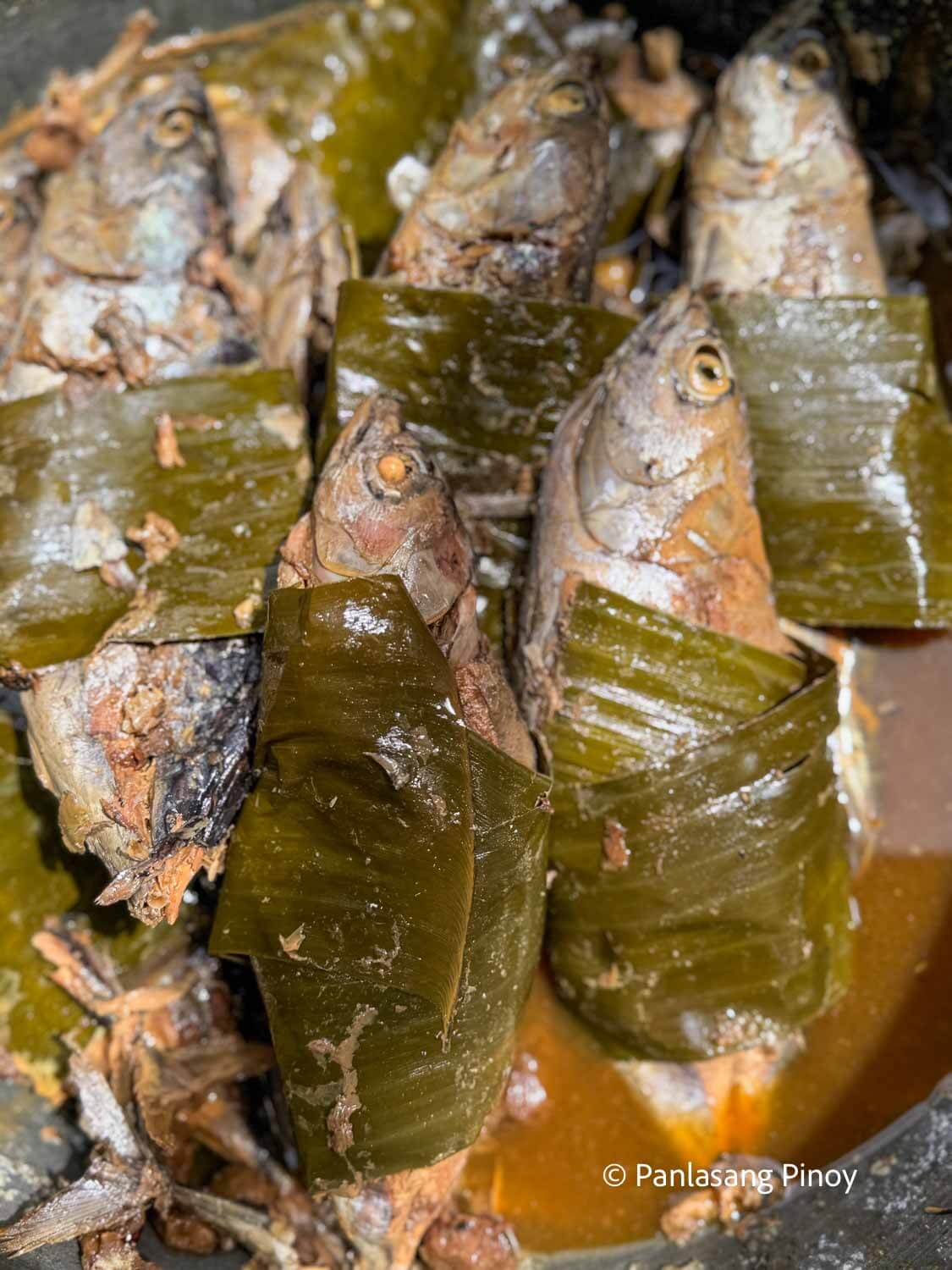
Sinaing means cooking something slowly in a small amount of liquid, so in English, we’d call this dish braised bullet tuna. So ‘braise’ yourself because I’m about to share the recipe for this amazing dish with you!
Both sinaing na tulingan and paksiw can use vinegar, but they’re actually pretty different dishes! So, what’s the deal? Well, paksiw is all about tenderizing fish or meat by simmering it in vinegar. On the other hand, sinaing na tulingan is a slow-cooked dish where the fish is braised in its own juices along with spices and a bit of vinegar or any kind of pampaasim, like kamias, which we’re going to use in this recipe.
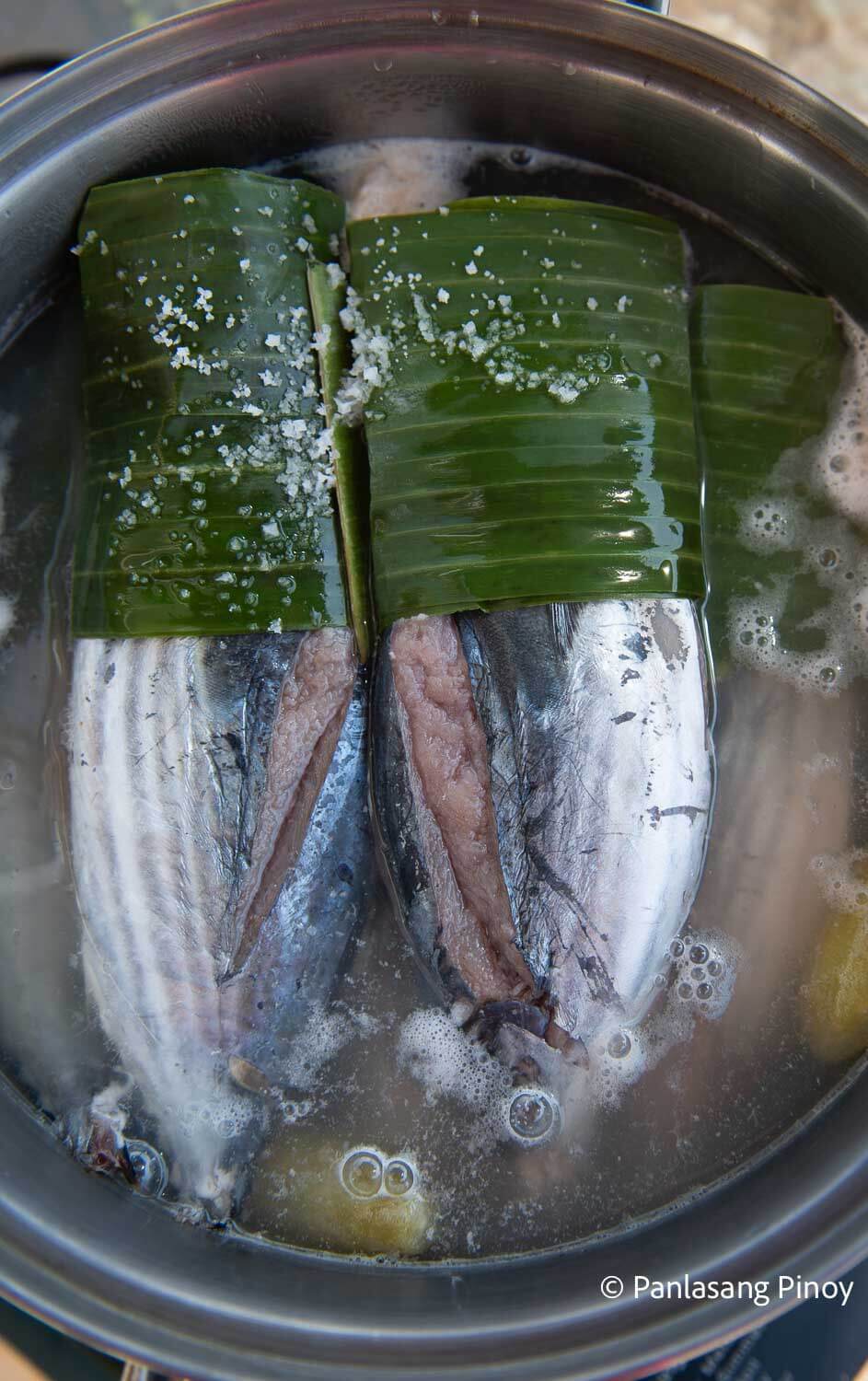
So if you’re craving something new, why not give sinaing na tulingan a try? It’s a delicious Filipino classic that’s different from your usual paksiw!
Sinaing na Tulingan Ingredients
What do we need to start our dish today? The star of the show is, of course, fresh tulingan! Scroll down to find out more!
- 4 pieces tulingan or bullet tuna – Search for the best and freshest fish, and make sure to get to the market early for the top pick.
- 8 to 10 pieces dried or fresh bilimbi or kamias – This will be our main pampaasim.
- 4 to 6 cups water – This is used for cleaning, soaking, and braising the fish.
- 4 to 5 tablespoons coarse sea salt or rock salt – You don’t want the dish to be bland, eh?
- Banana leaves – This is optional, but I highly recommend it. Not only does it have a natural aroma and trap moisture for the perfect fish, but it also just hits differently with banana leaves!
Tips and tricks
The process in making sinaing na tulingan is really simple. Your attention should be in cleaning the fish. You will need to remove the innards including the gills. Make sure that all the blood is washed off, and the tail is properly removed. I remove the tail of the fish by twisting it in a 360 degree angle and then pull it off gently. You will know if you did it correctly when a portion of the meat is attached to the tail.
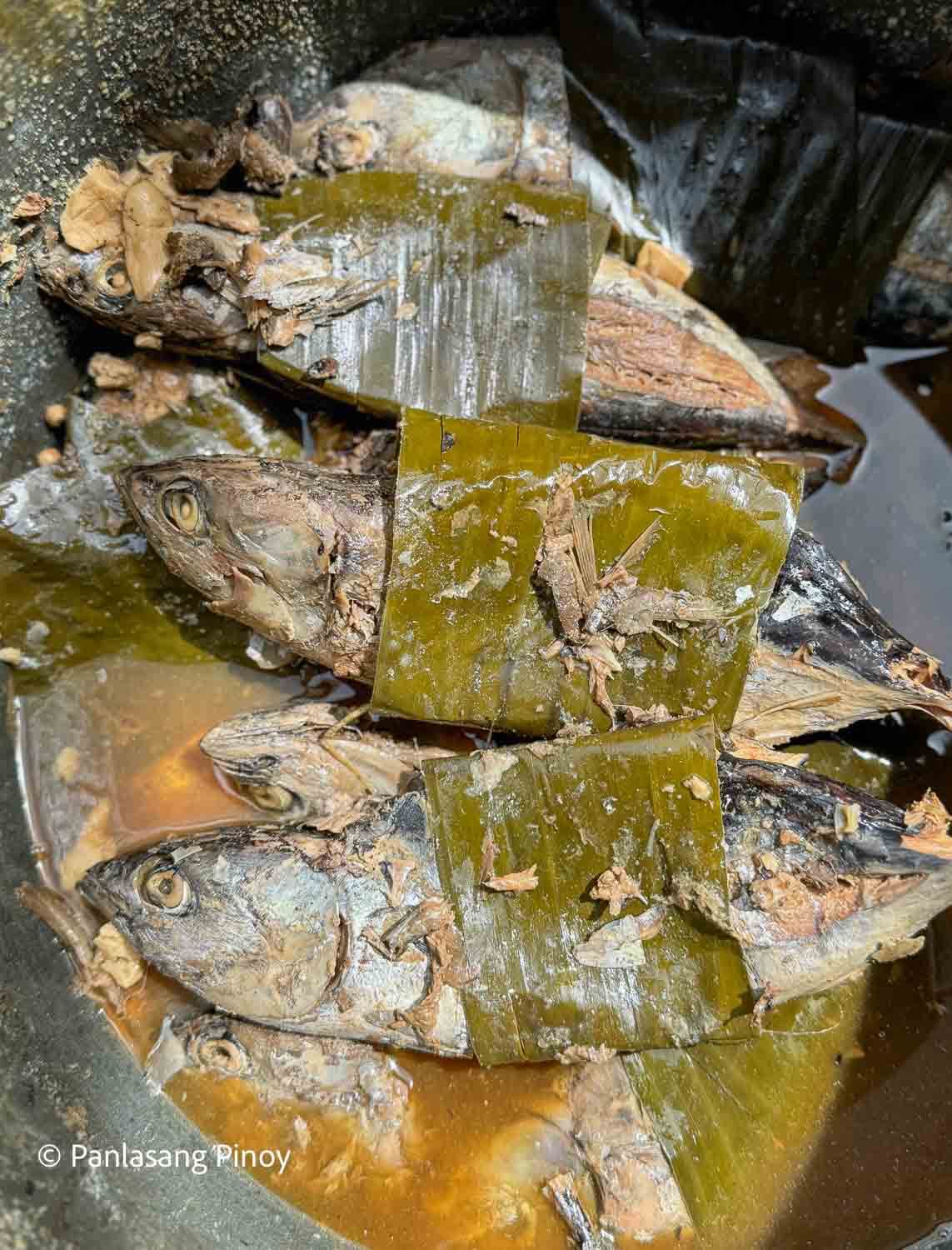
When the fish is ready, all you will need are bilimbi (kamias), salt, and water. The fish needs to be salted before cooking. Traditional recipes will ask you to cook the fish in palayok (clay pot). Since I don’t have it, we’ll be using an ordinary cooking pan. There are versions that make use of pork fat. This is not a pork recipe, but adding this ingredient gives the dish more flavor.
How to Cook Sinaing na Tulingan?
1. Clean the fish
- Clean the fish by removing the innards, gills, and tail from the fish. To take off the tail, simply twist it with your hand and gently pull it out. You’ll know you did it right if a bit of meat comes off with the tail.
- Rinse the fish under running water to wash away all the blood. Give it a good clean so it’s ready for our sinaing na tulingan recipe.
2. Make incisions
- On one side of the fish, make about 4 slanting cuts. On the other side, make one long, straight horizontal cut across the top. This helps the flavors soak in better!
3. Soak the tulingan
- Soak the fish in water for 10 minutes, then clean off any blood that comes out. This step helps to prepare the fish for the perfect braising!
4. Salt the fish
- Rub rock or sea salt all over the fish, making sure to get it into the internal parts as well. Press the fish flat and let it stand for 10 to 15 minutes to let the salt work its magic for our sinaing na tulingan.
- The fish should have a light, even coating of salt all over its surface and inside the cavity. You don’t need a thick layer, just a nice even coverage. If you see a lot of salt accumulating in one spot, you might want to spread it out a bit more.
5. Prepare the bilimbi or kamias
- Place all our bilimbi (kamias) into a clay pot or a regular cooking pot. This sour fruit adds a delicious tang to the dish.
6. Arrange the fish
- Wrap each fish in pre-cut banana leaves and arrange them on top of the bilimbi. This will help infuse the fish with flavor and keep it moist
7. Add water and cook
- Pour in enough water to just cover the fish. Bring to a boil, then reduce the heat and let it simmer for 4 to 5 hours.
- Add water as needed to keep the fish covered.
8. Serve the dish
- Transfer the fish to a serving plate and pour the remaining cooking liquid (called patis) into a bowl.
- Serve with warm steamed white rice and enjoy!
How to Serve Sinaing na Tulingan?
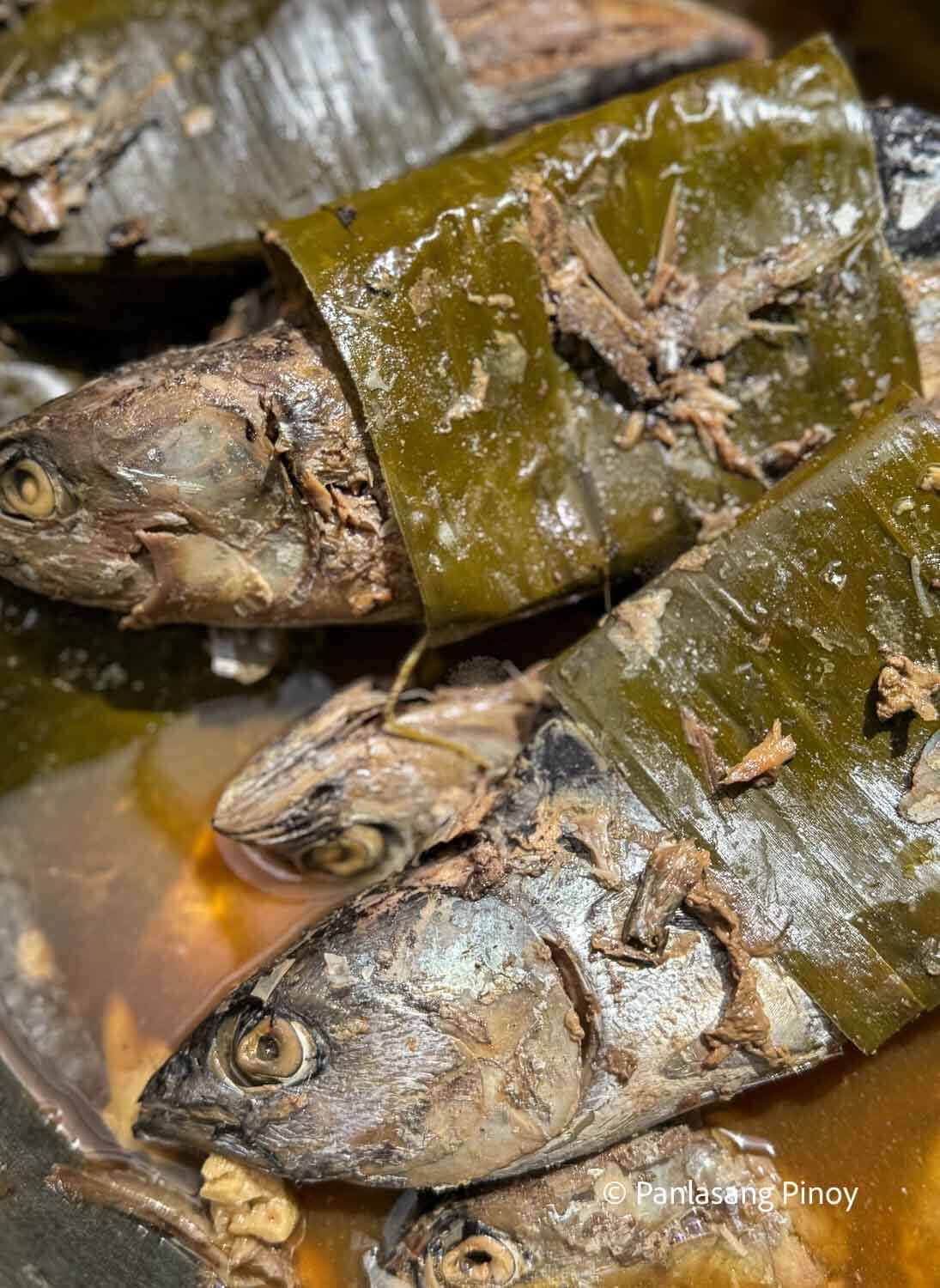
Well, hot white rice is perfect, and eating with your bare hands is a very Filipino thing——what could be better? Get your patis and add some chilis to it. Gently dip your fish into the patis and taste the delicious difference!
This dish is perfect any time of day, but I especially love enjoying it for lunch with a cold drink afterward. Drop a comment if you’re excited to try this too! See you in my next recipe!
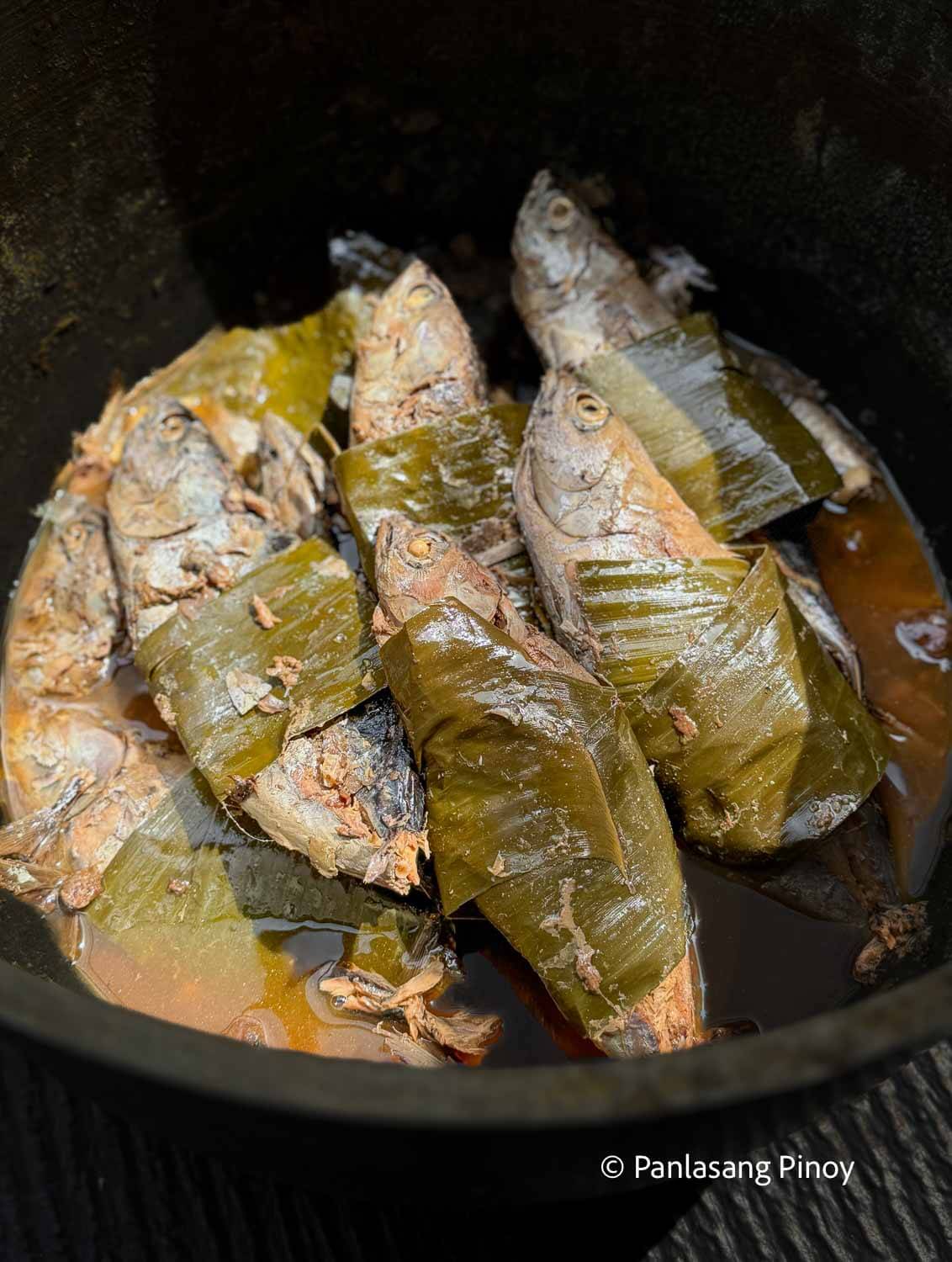
You can use either dried or fresh (even fresh frozen) bilimbi. Lay them at the bottom of the pan and then arrange the fish on top. You may place cut banana leaves to hold the fish, if desired. Put enough water to cover the fish. Cooking time varies for this dish. They say that the longer you braise the fish, the better it gets. I only did it for 2 hours due to lack of time, but you can do it for 3 to 5 hours – just add water as necessary. By the way, the liquid that is left is called “patis”. You will need to serve it along with the fish as all the flavor are in it.
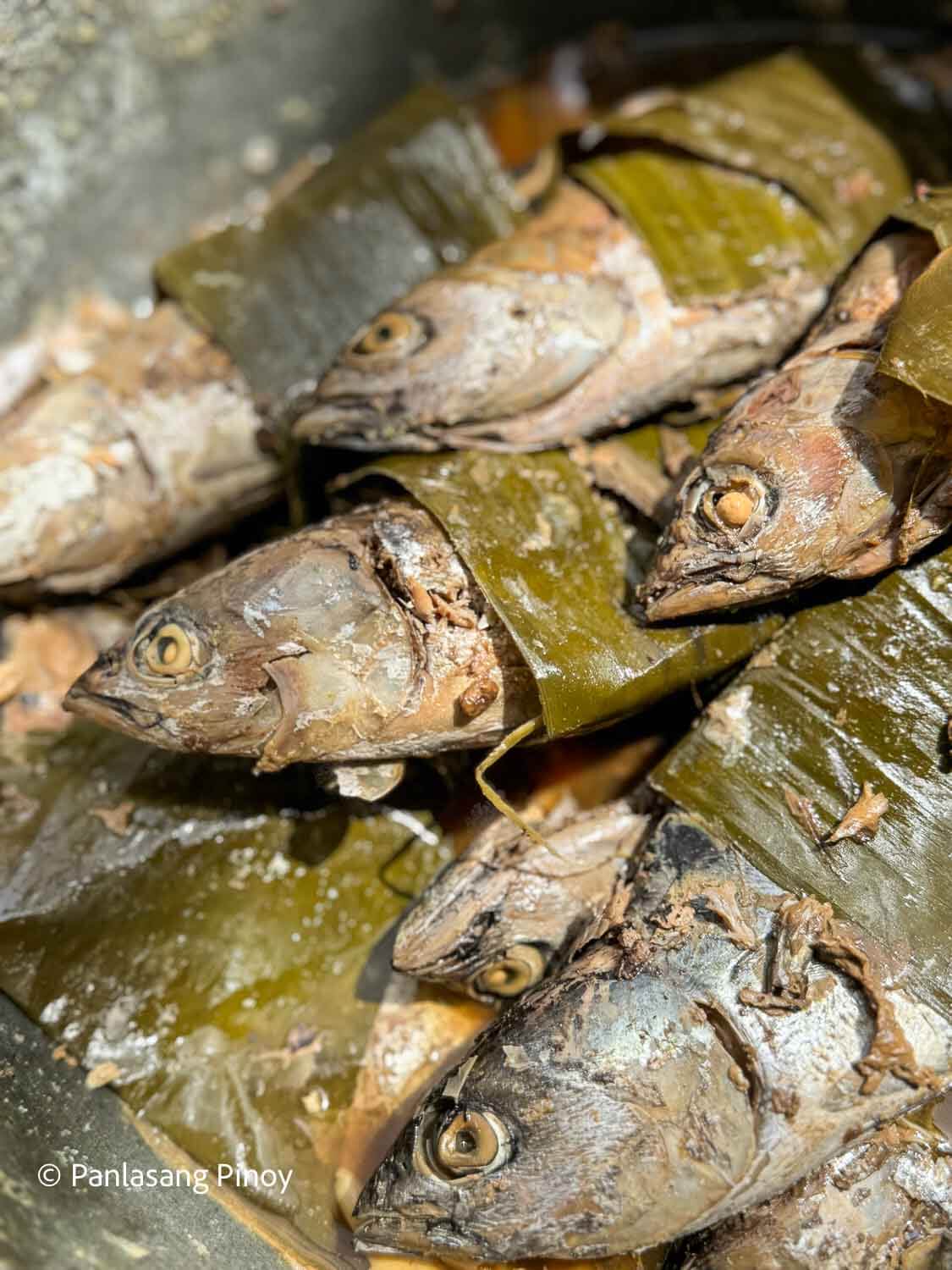
Try this Sinaing na Tulingan Recipe. Sometimes, simple foods are more appealing.
Did you make this? If you snap a photo, please be sure tag us on Instagram at @panlasangpinoy or hashtag #panlasangpinoy so we can see your creations!
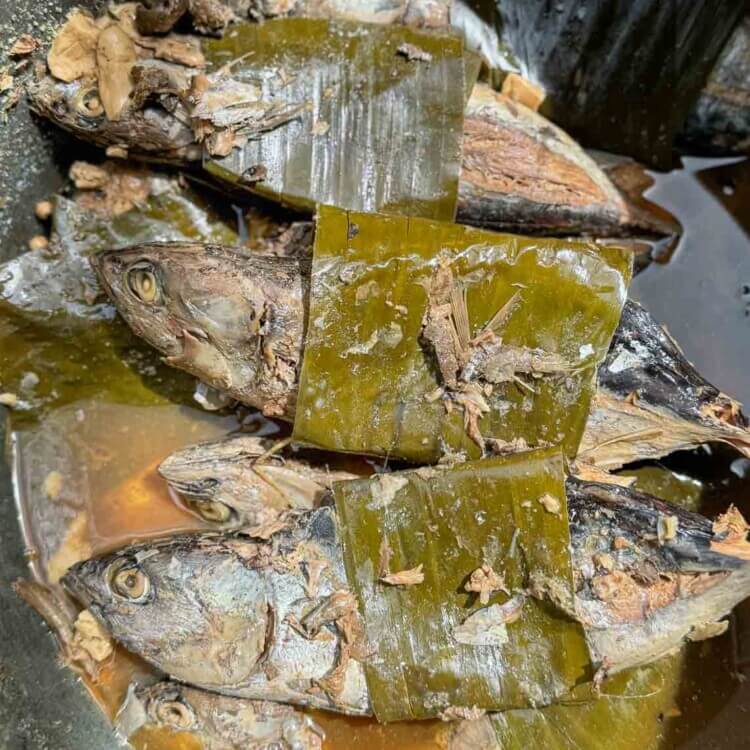
Sinaing na Tulingan Recipe
Ingredients
- 4 pieces tulingan bullet tuna
- 8 to 10 pieces dried or fresh bilimbi kamias
- 4 to 6 cups water
- 4 to 5 tablespoons coarse sea salt or rock salt
- Banana leaves optional
Instructions
- Clean the fish by removing the innards, gills and tail. When removing the tail, twist it using your hand and gently pull the tail out. You will know that you did it correctly if some meat is attached to the tail.4 pieces tulingan
- Wash the fish in running water to get rid of all the blood.
- Make about 4 slant incisions on one side of the fish and 1 long straight horizontal incision on the top part of the other side.
- Soak the fish in water for 10 minutes and clean the blood that comes out.
- Salt the fish by rubbing rock or sea salt. Make sure that you apply the salt even to the internal part. Press the fish so that it will be flat. Let it stand for 10 to 15 minutes.4 to 5 tablespoons coarse sea salt or rock salt
- Arrange the bilimbi (kamias) in a clay pot or a regular cooking pot.8 to 10 pieces dried or fresh bilimbi
- Wrap pre-cut banana leaves under the head of the fish, and then arrange them over the bilimbi.Banana leaves
- Pour-in the water. The water level should be equal to the level of the fish.4 to 6 cups water
- Apply heat and then allow to boil. Simmer (reduce to a lower temperature) the fish for 4 to 5 hours. Add water as needed.
- Transfer the fish in a serving plate. Transfer the remaining liquid (called patis) in a bowl.
- Serve with warm steamed white rice. Share and enjoy!
Notes
Why clay pot in sinaing na tulingan
A clay pot is used in sinaing na tulingan because it’s great at keeping the heat steady and even, which is perfect for the slow cooking that makes the fish taste amazing. The clay adds a natural, earthy flavor to the dish and keeps it true to traditional Filipino cooking. Plus, clay pots are durable and won’t change the taste of the food, so they help bring out the rich, authentic flavors of the dish as it simmers for hours!What is patis?
Patis is a Filipino fish sauce made by fermenting fish with salt, creating a salty, savory condiment that adds delicious flavor to many dishes. In sinaing na tulingan recipe, the remaining liquid after cooking is called patis because it’s similar to the fish sauce used in Filipino cooking, rich with the flavors extracted from the fish and ingredients during the long simmering process. This tasty liquid can be used as a dipping sauce or seasoning for other dishes, capturing the true essence of Filipino flavors.Video

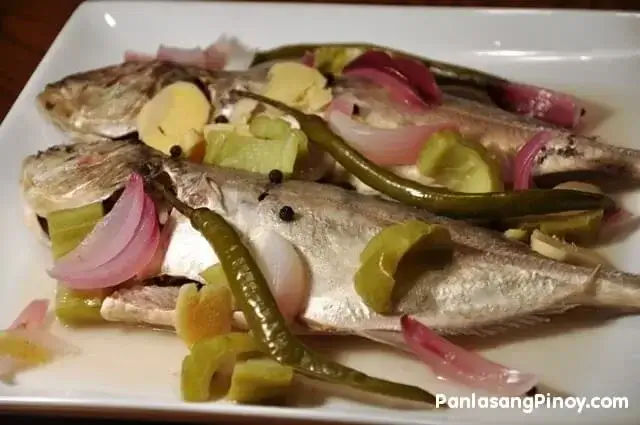
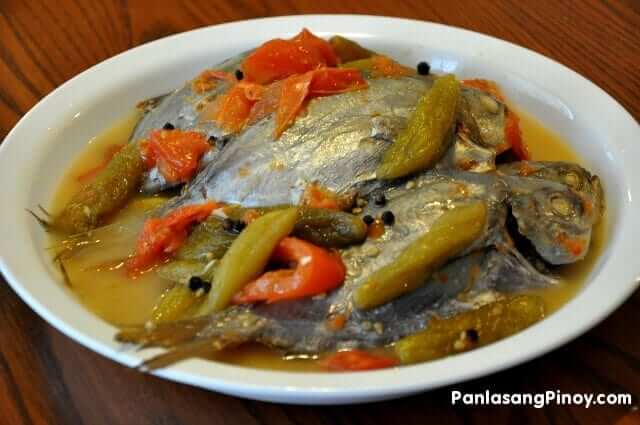
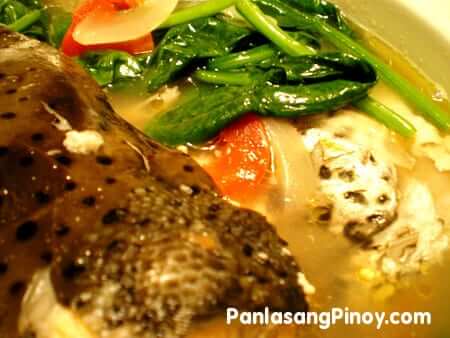
Mena Roman says
What’s the substitute if there’s no kamias? Thanks
Vanjo Merano says
Thanks for the question. I really think that kamias gives it authenticity. However, using batwan and young tamarind can be good alternative ingredients.
Norita says
Can I use lemon or sinigang mix if I don’t have kamias?
Vanjo Merano says
Norita, both ingredients that you mentioned have a sour taste similar to kamias. While it can be used as alternatives technically, I still don’t recommend using these when making sinaing na tulingan. The outcome won’t exactly be the same and there will be a noticeable difference.
Nelma Bi. says
Nice ….gumagawa ako now ng ganyan try kong gayahin sinaing na tulingan….
ton says
wow simple but rock or yummy
Larry Fish says
can’t find kamias where I live, any substitute suggestion.
grace says
I rub Sinigang sa Camias mix on the fish, it does the trick. Without the acid from Kamias, boiling the tulingan for 2-3 hours will disintegrate its flesh. I think vinegar can serve as a substitute too but don’t put too much or it will taste like paksiw.
Vita says
Where can I find kamias?? I want to cook my favorite fish.